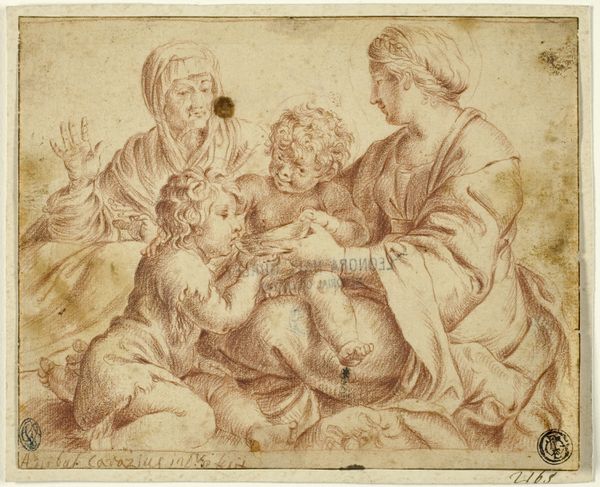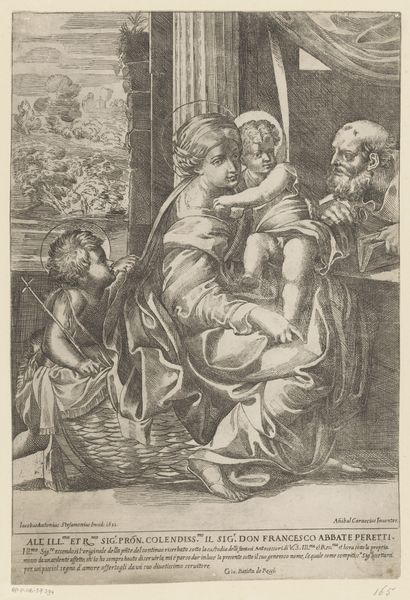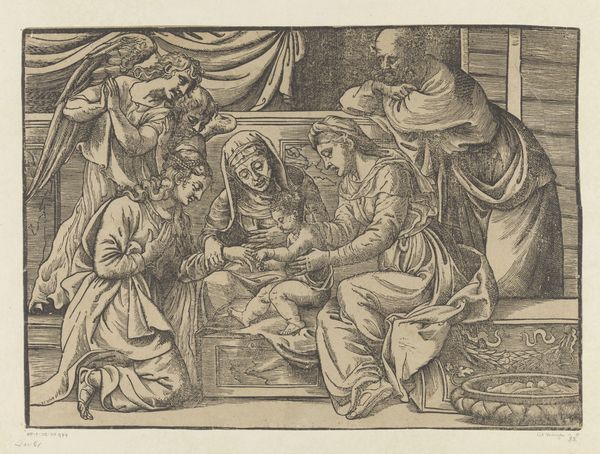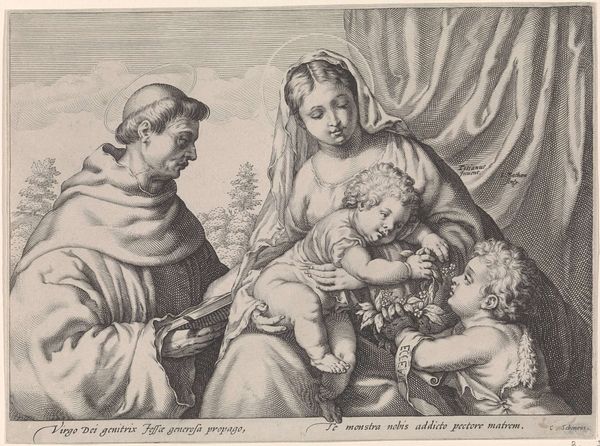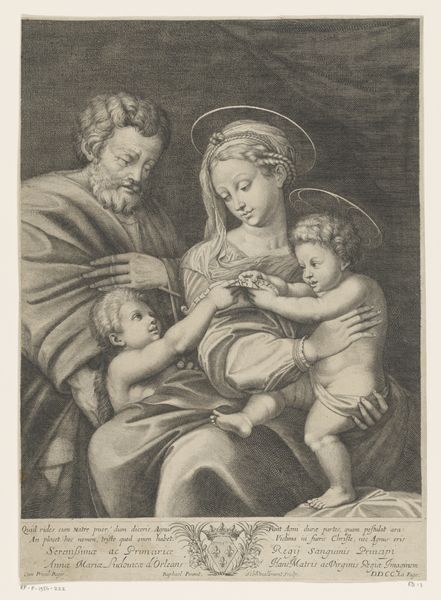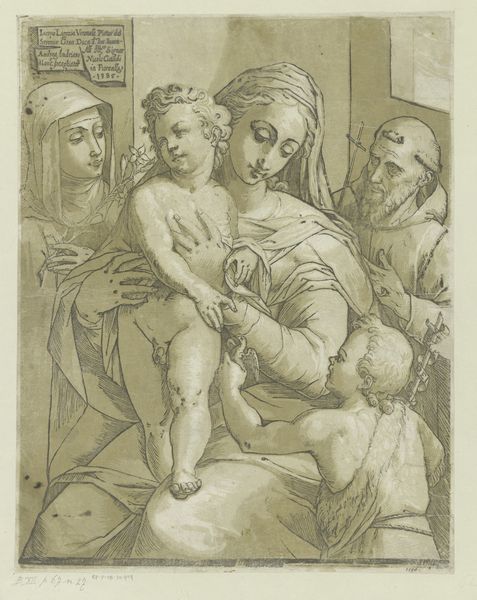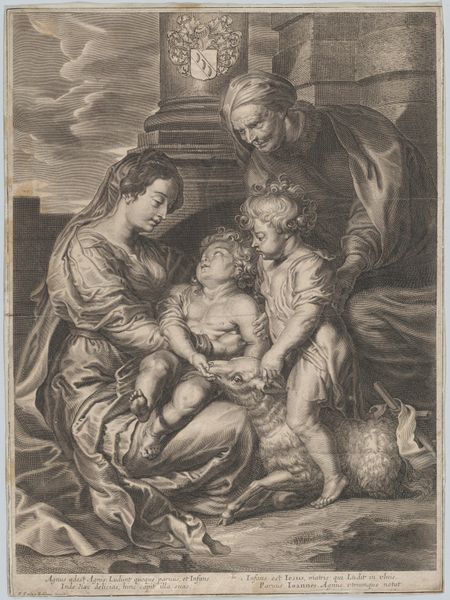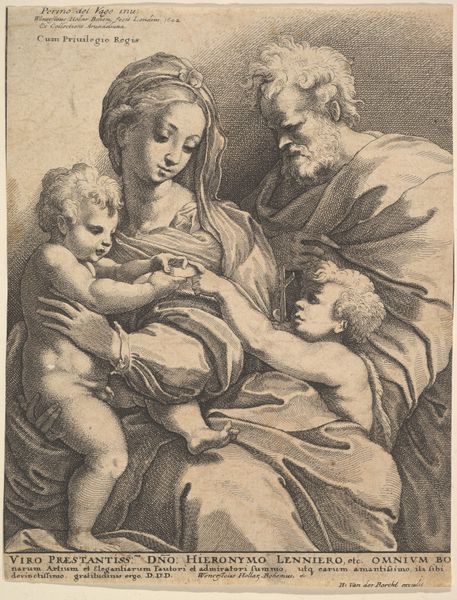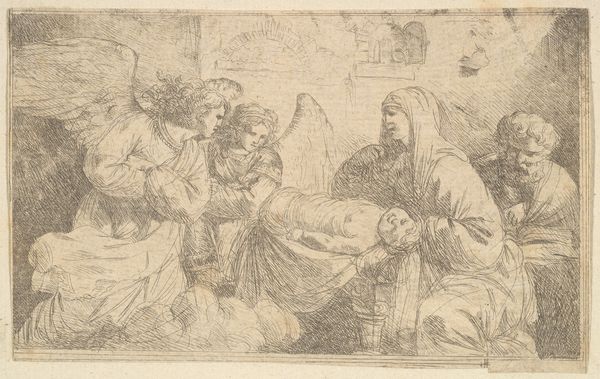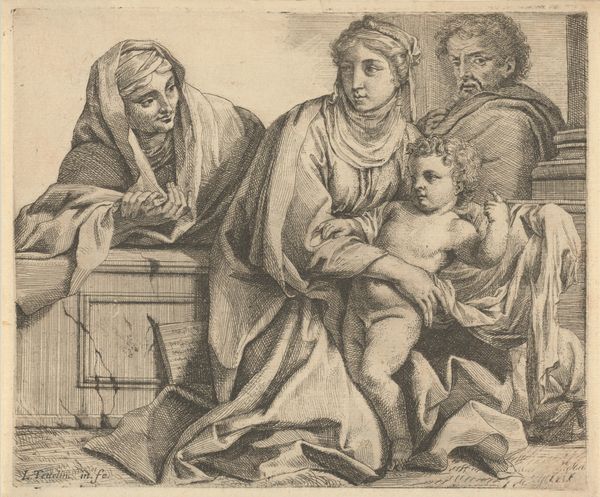
Madonna and Child with Saints Elizabeth and John the Baptist (Madonna della Scodella), the seated Mary and the infant Christ hold a cup from which the young Baptist drinks, Elizabeth lifts both hands 1606
0:00
0:00
drawing, print, engraving
#
drawing
#
narrative-art
# print
#
figuration
#
madonna
#
child
#
italian-renaissance
#
engraving
Dimensions: Sheet: 5 1/16 × 6 1/2 in. (12.8 × 16.5 cm)
Copyright: Public Domain
Curator: Look at this intriguing print from 1606, attributed to Annibale Carracci. It's called "Madonna and Child with Saints Elizabeth and John the Baptist," now residing at the Metropolitan Museum. It presents a classic Renaissance theme. What is your initial reaction to it? Editor: Oh, a lovely tangle of limbs and halos! There’s something intimate about the arrangement, almost domestic. It has the texture of faded memory; the hatching reminds me of a worn tapestry, soft despite the weighty subject matter. Curator: The materiality certainly informs the subject. The work itself is an engraving, one of multiple after his iconic painting. Think of the labor, the skilled hand meticulously carving lines into a metal plate. This reproducible art made sacred imagery more widely accessible, becoming part of household and personal devotion. Editor: That makes me think about the labor involved – not just the artist’s, but also the artisans who made the paper, the inks. Each contributing to this visual hymn, spreading devotion! Though, personally, while I recognize it’s the Renaissance, I find the figures rendered a bit too heavy, too monumental for a moment of such seeming tenderness. It’s less 'Madonna' and more 'Matron,' you know? Curator: Well, such classical influences were highly valued then. We need to see past our contemporary lens. Consider how it blends high art with accessible printmaking technology. Reproductions allowed Carracci's imagery to circulate, influencing popular devotional practices. Editor: And I suppose we shouldn't overlook how depictions like these also reinforced social roles, the idealized mother, the saintly elder… but the child drinking from a cup – there's something so immediately appealing in that act of innocent sharing! It transcends time and theological construct, bringing it down to our own human experience of nurturing and dependence. Curator: A poignant way to end this observation! I would agree that by understanding both the means of production and the subject matter, we find an appreciation for its artistic and social value in a religious context. Editor: Indeed, what seems classical is a complex story of human production, accessible divinity, and emotional touch.
Comments
No comments
Be the first to comment and join the conversation on the ultimate creative platform.
